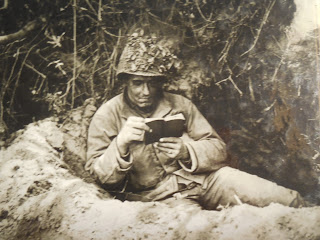Christmas is a good time to read about others who are less fortunate.
"Just Mercy" is about the American prison system.
 Bryan Stevenson graduated from Harvard Law School and began working with the Southern Centre for Human Rights, representing death-row inmates throughout the southern United States.
Bryan Stevenson graduated from Harvard Law School and began working with the Southern Centre for Human Rights, representing death-row inmates throughout the southern United States."We make terrible mistakes. Scores of innocent people have been exonerated after being sentenced to death and nearly executed. Hundreds more have been released after being proved innocent of noncapital crimes through DNA testing. Presumptions of guilt, poverty, racial bias, and a host of other social, structural, and political dynamics have created a system that is defined by error, a system in which thousands of innocent people now suffer in prison."
Children have been a particular concern for Bryan. U.S is the only country that sends children (some as young as twelve) to prison for life. Often the child has only known violence and abuse in the home. And when he is put into adult prison, he experiences abuse there. The other choice is solitary confinement. There is a story about a 14-year-old who went to the electric chair.
Bryan started a non-profit organization called "Equal Justice Initiative" to work with prisoners on death row. He began with no office and one co-worker and now has 48 lawyers working for this human rights group.
 When Bryan is unsuccessful in getting the death sentence revoked, the prisoner often asks Bryan to attend the execution. He tells about the cloud of regret and remorse that seems to envelop everyone. Quote: "The prison officials had pumped themselves up to carry out the execution with determination and resolve, but even they revealed extreme discomfort and some measure of shame. Maybe I was imagining it but it seemed that everyone recognized what was taking place was wrong. Abstractions about capital punishment were one thing, but the details of systematically killing someone who is not a threat are completely different."
When Bryan is unsuccessful in getting the death sentence revoked, the prisoner often asks Bryan to attend the execution. He tells about the cloud of regret and remorse that seems to envelop everyone. Quote: "The prison officials had pumped themselves up to carry out the execution with determination and resolve, but even they revealed extreme discomfort and some measure of shame. Maybe I was imagining it but it seemed that everyone recognized what was taking place was wrong. Abstractions about capital punishment were one thing, but the details of systematically killing someone who is not a threat are completely different."The book is filled with statistics and individual cases. I was surprised to discover that, in many states, the judge can overrule the verdict. When that is done, the judge makes the sentence tougher than the jury did, in order to look "tough on crime".
There was more detail of cases than I needed but I certainly learned a lot about the American justice system and how one person can make a difference.
Bryan looks into each case and spends time getting to know each individual. He sees their 'humanity' and tries to bring justice and mercy.










































